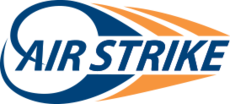News
Airknives date back to the late 1800 where they were used to separate chaff from grain. Obviously they have come a long way since then and the applications are endless! There are two types we focus on for industrial applications. High pressure and low pressure airknives. The high pressure airknives are typically powered by compressed air which is the most expensive way to power an airknife. Plant compressed air in many industries cost more than all other utilities combined, this is why it is important to focus on the “BEST AIR PRACTICES” to lower a company’s operating cost.
AIRSTRIKE AIRKNIVES are designed to be powered by low pressure air. A typical air pressure requirement for AIRSTRIKE airknives is 2 to 6 PSI pending the application. By utilizing low pressure airknives where possible a company can lower their compressed air usage for that application by up to 80%!
The low pressure airknives gained popularity in the late 1980’s when many companies were regulated to stop using VOC in their parts cleaners due to the damage that was being caused to our environment. Parts washers were now being designed as aqueous washers and they needed the assistance of either airknives or heat to dry the parts. By utilizing the air you are able to have a part dried spot free with no residue if designed properly. (The heat option is typically the most expensive to operate over the life time of the washer). Please note that in some cases we may recommend heaters or even high pressure airknives where they can be operated efficiently.
Airknives are designed to supply a uniform sheet “knife” of air which can be used to blow off water, debris, excess coatings or even cool a part if needed. The air from an airknife is vary uniform and is referred as laminar air flow. Pending the design, gap and operating pressures, discharge velocities can reach as high as 40,000 FPM. Note that not all applications will require velocities of this magnitude. Many applications operate at 20,000 FPM or less.
Because the airknife utilizes basic math where you have a known gap area of the airknife, a known target operating pressure we can calculate the airflow required to best effectively achieve the target results. Once we know this we can select the best blower for the application. As the airknife can be powered by any brand / type of blower it is best to have a basic understanding of these. These will be covered in future forums.
